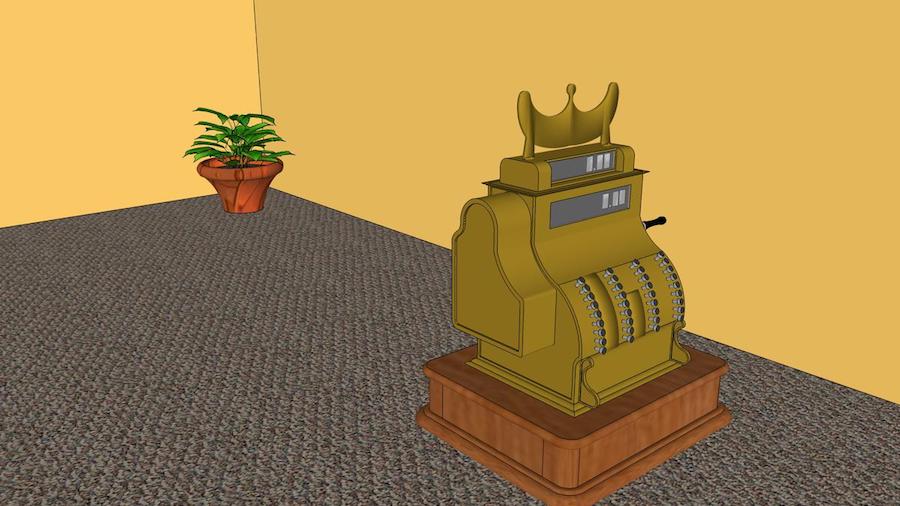
VR environments allow for immersive participation, incongruent findings
Have you ever walked toward the CoHo to get to your bike, only to find out your bike is an entirely different location? You might have realized your bike is actually at Wellman, but recalled that yesterday it was at the CoHo. The information stored in your brain was retrieved incorrectly.
A paper published in the Nature Communications journal by Ph.D. candidate Halle Dimsdale-Zucker and her colleagues at the Ranganath Lab used virtual reality to place participants in two distinct houses. The houses were carefully controlled environments filled with about 200 easily recognizable objects, ranging from a football helmet to a bowling pin to a bookcase.
Participants would watch a few short videos showcasing the virtual environments, which differed in their object placement. They would then be shown images of objects and be asked whether or not they observed them in any of the videos.
Their brain activity would be recorded using an fMRI scanner to determine what parts of the hippocampus were activated when a person was retrieving certain types of memories. The hippocampus “files” information by time and location (spatial memory) and the context of that time and place are stored separately (episodic memory). Both are needed to reconstruct stored memories.
“What we found was, brain activity in these very specific parts of the hippocampus, was very sensitive to when the events took place,” said Charan Ranganath, the director of the memory and plasticity program at UC Davis and a professor at the Center for Neuroscience in the Department of Psychology. “What you could find is that in one area [of the hippocampus], which is called CA1, it was lumping together memories of objects that you saw in the same movie, but it filed the memories completely differently if they were seen in different movies.”
This split could be likened to the organization of computer files either by time or by the type of file. Memory can also be compared to writing down information. The pen is used for encoding the information and the piece of paper with the information is stored for later use. It’s like having a grocery list on the piece of paper and needing to retrieve the information while at the store.
“But what’s different about our memories and writing down something on a grocery list, is that our memories aren’t a snapshot of what happened,” Dimsdale-Zucker said. “Our memories are a reconstruction of what we think happened. It’s not just as simple as bringing out your grocery list and saying, ‘Oh, all ten items are on my list’. It’s more like if you pulled out your grocery list and maybe things are written in a slightly different font, and some of the letters are missing, and some of the items aren’t there.”
The use of VR isn’t new in memory research, but as technology improves, it is important to bring a different and immersive experience to the participant. List learning doesn’t have the same level of engagement as a VR experience.
“[VR] provides a way to make precise brain measurements with fMRI from observers having a real world experience that mimics daily life,” said Joy Geng, an associate professor of psychology who studies how attention affects information processing. “The work is innovative because it combines the best of ecologically valid research [research in which a variable in a simulated environment can be generalized to real life situations] with highly controlled research.”
According to Dimsdale-Zucker, there are “exciting discrepancies” between the paper’s findings and others in the same field.
“There’s been a lot of models and theoretical work proposing different regions of the hippocampus represent different types of information, but in humans, there’s been limited information that that’s actually true,” Dimsdale-Zucker said. “This is one of the first studies to report a dissociation between regions of the hippocampus for representing information in different ways.”
Jared Stokes, a Ph.D. candidate in Arne Ekstrom’s human spatial navigation lab, compared his work and that of Dimsdale-Zucker’s, noting that there are major differences in the experimental design which are causing these discrepancies. He is optimistic that the improvement of technologies like VR may help in aligning the experimental results of other scientists, given that the designs of the experiment is similar.
“It’s been a challenge to try and figure out a way to functionally dissociate these regions,” Stokes said. “I think that in some ways, her findings haven’t mapped out to a lot of people’s findings, but neither have [other scientists’ findings] mapped onto other people’s. There’s basically just a lot of incongruities in the research, and I think trying to understand these gaps is a real challenge, but it’s exciting.”
Dimsdale-Zucker is planning to follow up on her research about spatial and episodic memory by turning her focus to remembering temporal information. She hopes that her work can “build up the instruction manual” and improve the lives of citizens, especially the elderly who may be experiencing memory problems.
“I think better understanding not just how we remember objects or items, but how we remember this related information is going to be really critical for understanding how memories work in the future,” Dimsdale-Zucker said. “That’s something that I and other people in the Ranganath Lab have been working on quite extensively.”
Written by: Jack Carrillo Concordia — science@theaggie.org



